Cantaloupe Jam with Vanilla Extract
This post may contain affiliate links. Read my full disclosure here.
Cantaloupe jam is one of those oddball jams you probably love or hate. When the melons are ripening faster than we can keep up with them, it’s time to make some jam.
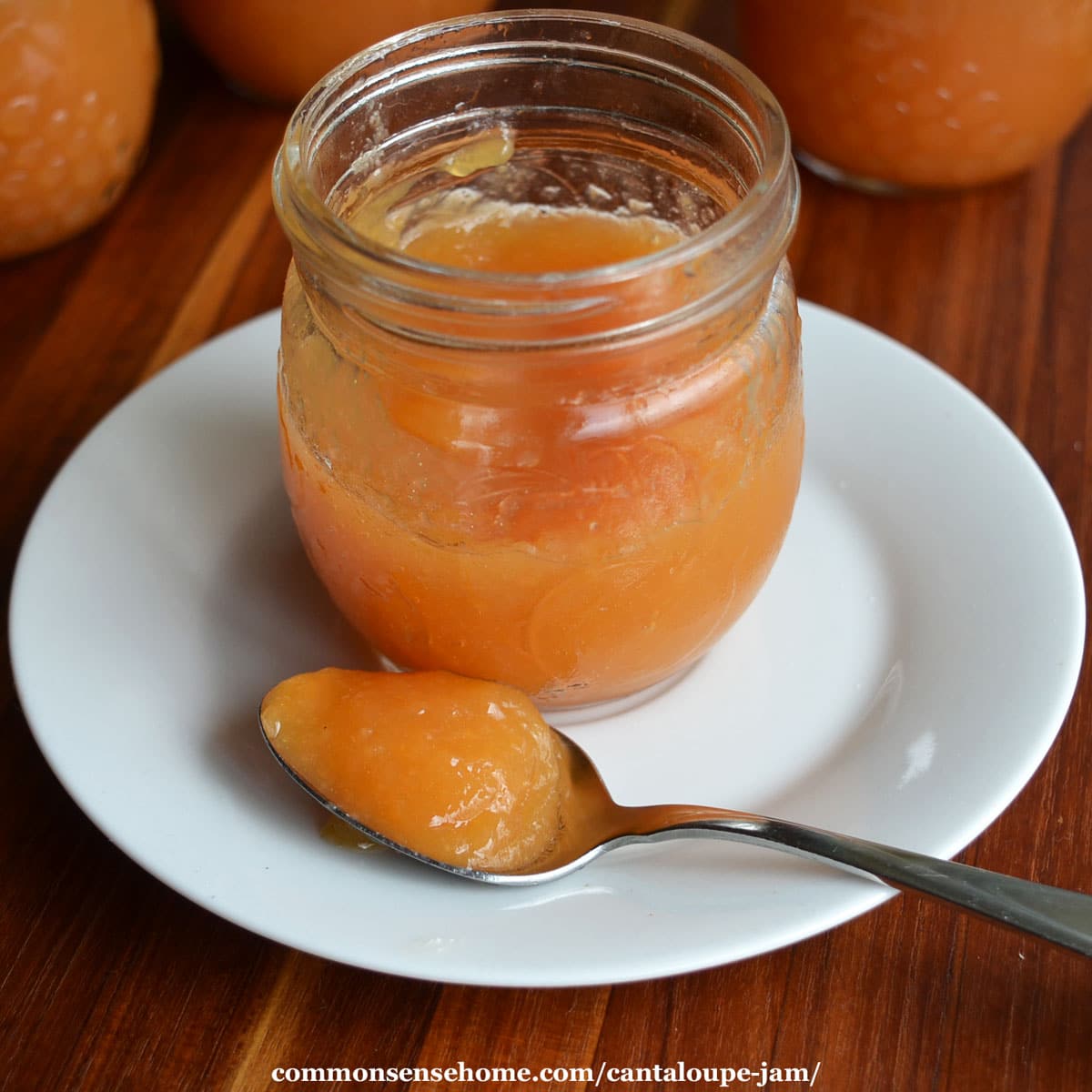
Cantaloupe has a pH between 6.13 and 6.58, making it only mildly acidic, so you must add acid for safe water bath canning. (Remember, we need a pH at or below 4.6 for water bath canning.)
We add lemon juice for acidity, and a bit of vanilla extract to make the flavor pop. If you prefer to avoid the lemon flavor, you can substitute 1 teaspoon of citric acid instead.
Cantaloupe Jam Recipe with Vanilla Extract
I use Pomona’s Pectin to thicken the jam, because it provides a reliable gel with less sugar. (Read more about using Pomona’s Pectin here.) You can find Pomona’s online, at natural grocers, or where canning supplies are sold.
This recipe makes 4 half pint jars.
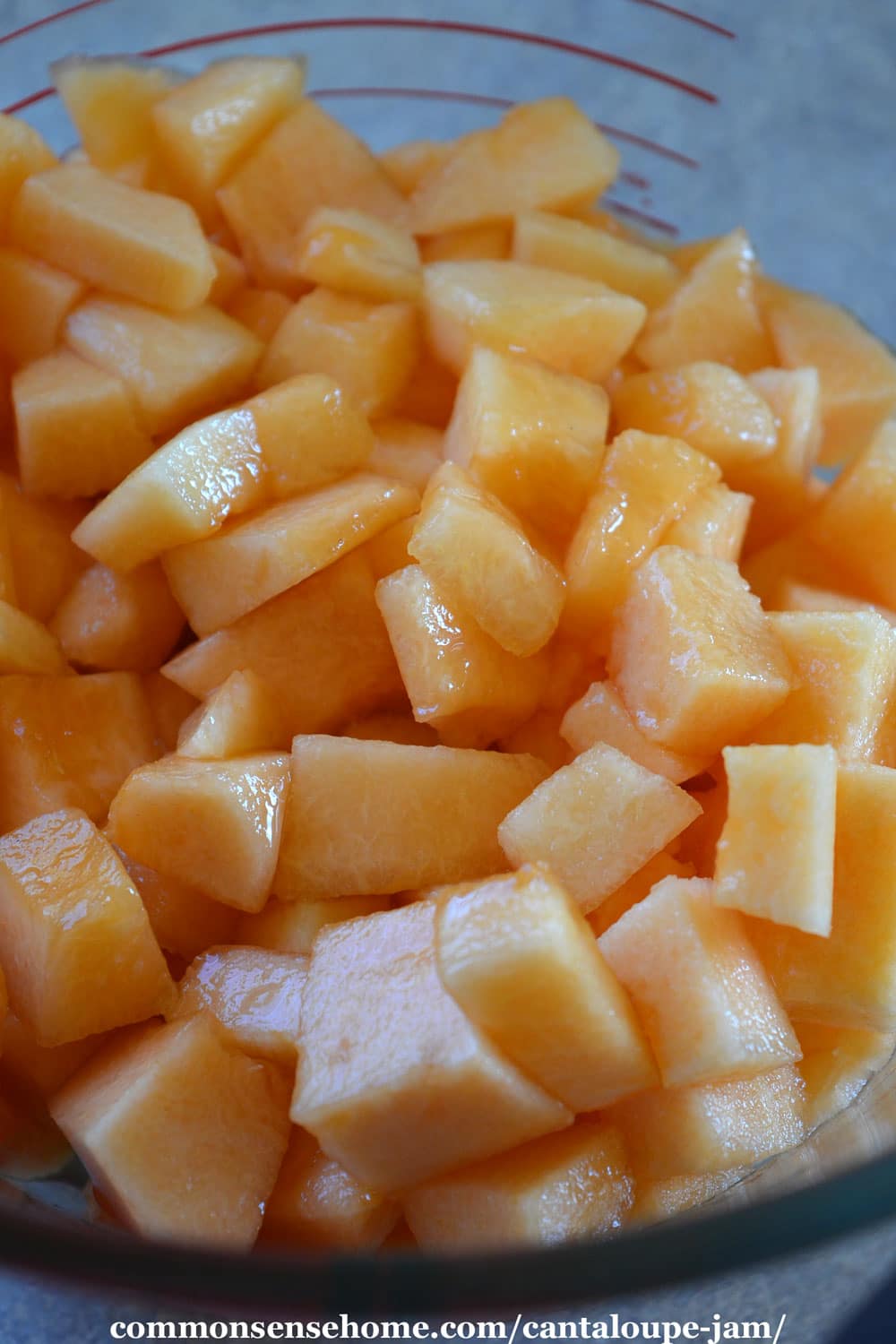
Ingredients
- 4 cups of mashed cantaloupe
- 1/4 cup lemon juice (or 1 teaspoon citric acid)
- 4 teaspoons calcium water (included with Pomona’s Pectin)
- 2 cups sugar
- 3 teaspoons Pomona’s pectin powder
- 1 teaspoon vanilla extract
Instructions
- Prepare your jars, lids, and bands. Fill water bath canner with water and heat it. I place my jars in the canner to heat them up, and keep my lids and bands in a small pot of hot water. Do not boil the lids before use.
- Peel and seed cantaloupe and mash or finely chop in a large bowl.
- Measure out 4 cups of mashed cantaloupe into a large saucepan with lemon juice and calcium water. Mix to combine.
- In a medium bowl, combine sugar and pectin powder. Mix thoroughly and set aside.
- Bring cantaloupe mixture to a boil over medium high heat. Add sugar-pectin mixture, stirring constantly, until sugar is completely dissolved.
- Bring jam to a full rolling boil for one minute. Remove the pot from the heat. Stir in vanilla extract.
- Ladle jam into sterilized jars, leaving 1/4 inch headspace. Wipe the rims of the filled jars with a damp cloth. Put on lid and ring, tighten to finger tight.
- Lower jars into canner, making sure they are covered with at least 1-2 inches of water. Place lid on canner, return to boil. Process jars for 10 minutes.
- Turn off heat. Remove jars from canner and place on a kitchen towel on the counter top. Allow to cool for 8 hours, or overnight.
- Check seals. Remove rings, date, label and store in a cool, dry location.
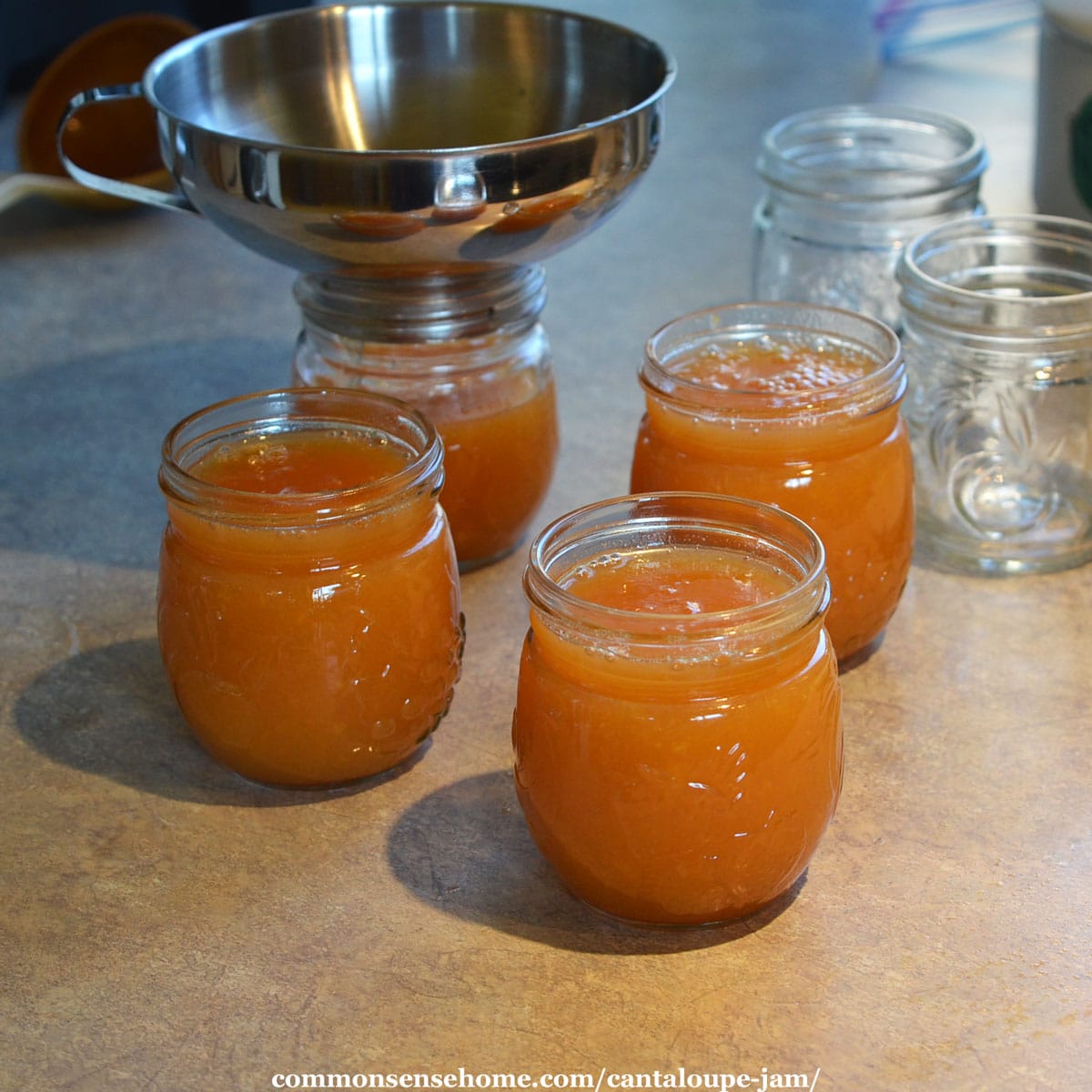
Adjust canning time for altitude if you are above 1000 feet above sea level. It is okay to make a double batch of this recipe if you are using Pomona’s pectin.
Use within 18 months for best quality. Refrigerate cantaloupe jam after opening and use within 1-2 weeks.
Would you like to save this?
Some of my Favorite Varieties of Cantaloupe (and Tips for Northern Growers)
We live in northeast Wisconsin, on the borderline between growing zones 4 and 5. As such, we have a fairly short growing season. Some years are cool, and melons struggle to ripen.
To give our garden cantaloupes a little extra boost of heat, we lay down black landscape fabric in the melon patch. This keeps down weeds while it warms up the soil, and we reuse the fabric year after year.
Depending on the year, sometimes we start melons inside, sometimes outside. If we start them outside, we cut the bottoms out of old vinegar jugs and use them as mini greenhouses for each melon hill. Starting plants outside avoids transplant shock. We open the caps for ventilation, and remove the covers on a day when it’s not too windy.
We also fill vinegar jugs with water, and place them around the melon hills to block the prevailing wind. It’s similar to the “wall o water” commercial products, but with more room for the vines to grow.
Some of our favorite cantaloupe varieties include:
- Minnesota Midget – small orange fruit, fast maturing
- Rocky Ford (AKA Eden’s Gem) – small green fruit, fast maturing
- Hale’s Best Cantaloupe – slightly larger melon, orange fleshed
- Banana muskmelon – these heirloom melons need more time to mature, but the large banana shape makes them an interesting addition to the home garden.
These are great for fresh eating or trying out the cantaloupe jam recipe.
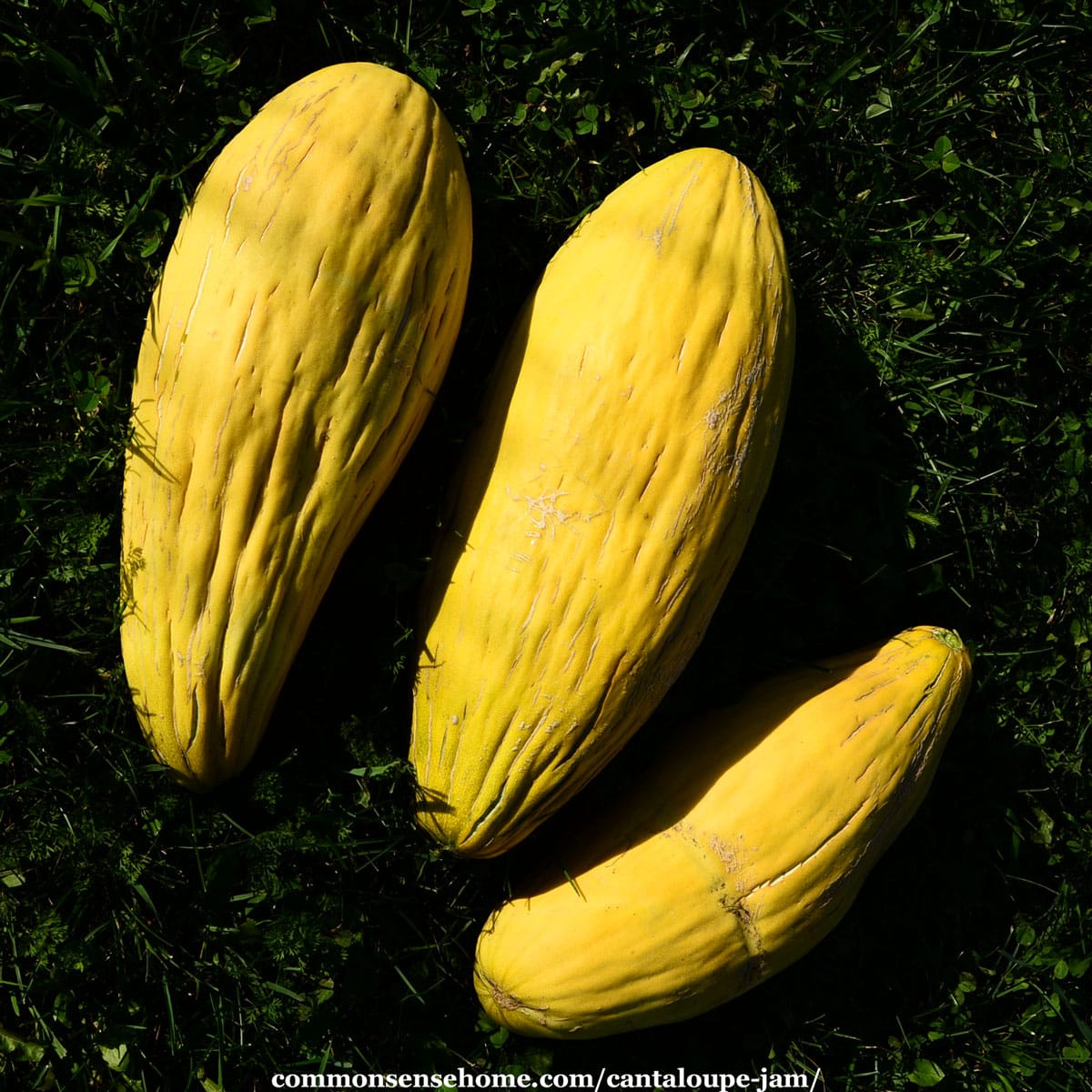
Print Friendly Recipe
PrintCantaloupe Jam with Vanilla Extract
Capture summer flavors with this unique melon jam.
- Prep Time: 15 mnutes
- Cook Time: 10 minutes
- Total Time: 0 hours
- Yield: 4 half pints 1x
- Category: jam
Ingredients
- 4 cups of mashed cantaloupe
- 1/4 cup lemon juice (or 1 teaspoon citric acid)
- 4 teaspoons calcium water
- 2 cups sugar
- 3 teaspoons Pomona’s pectin powder
- 1 teaspoon vanilla extract
Instructions
- Prepare your jars, lids, and bands. Fill water bath canner with water and heat it. I place my jars in the canner to heat them up, and keep my lids and bands in a small pot of hot water. Do not boil the lids before use.
- Peel and seed cantaloupe and mash or finely chop in a large bowl.
- Measure out 4 cups of mashed cantaloupe into a large saucepan with lemon juice and calcium water. Mix to combine.
- In a medium bowl, combine sugar and pectin powder. Mix thoroughly and set aside.
- Bring cantaloupe mixture to a boil over medium high heat. Add sugar-pectin mixture, stirring constantly, until sugar is completely dissolved.
- Bring jam to a full rolling boil for one minute. Remove the pot from the heat. Stir in vanilla extract.
- Ladle jam into sterilized jars, leaving 1/4 inch headspace. Wipe the rims of the filled jars with a damp cloth. Put on lid and ring, tighten to finger tight.
- Lower jars into canner, making sure they are covered with at least 1-2 inches of water. Place lid on canner, return to boil. Process jars for 10 minutes.
- Turn off heat. Remove jars from canner and place on a kitchen towel on the counter top. Allow to cool for 8 hours, or overnight.
- Check seals. Remove rings, date, label and store in a cool, dry location.
Notes
Adjust canning time for altitude if you are above 1000 feet above sea level. It is okay to make a double batch of this recipe if you are using Pomona’s pectin.
Use within 18 months for best quality. Refrigerate cantaloupe jam after opening and use within 1-2 weeks.
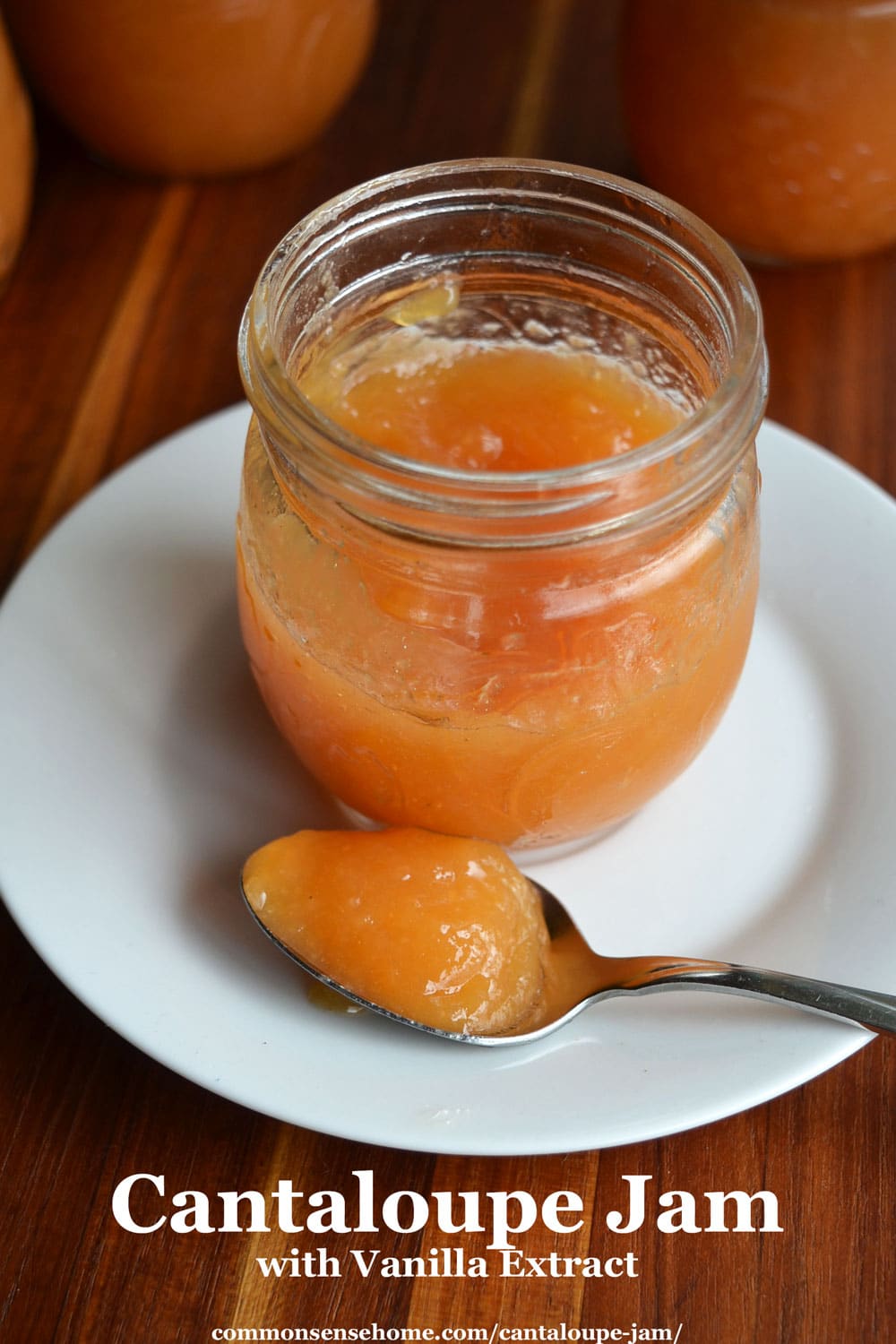
More Jams and Jellies
We have dozens of recipes for jams, jellies, and spreads on the site, including:
- 2 Ingredient Apple Jelly
- Strawberry Jam – 5 easy recipe variations for America’s most popular jam
- Corn Cob Jelly 2 Ways – Traditional or Less Sugar
- Orange Marmalade Recipe (Quick Cooking, Low Sugar)
- Dandelion Jelly – An Easy Flower Jelly Recipe with Less Sugar


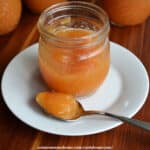



Thank you for everything you share. I am always inspired!
Thanks for the list of short season/hardy melons. The first and until now the last contact I had with Rocky Ford melons was a few decades ago at a pick up truck at an intersection in suburban North Denver! Glad to know it is still around and valued by short season gardeners! I am farther North in Wisconsin than you with Zone 3b conditions. I have had some success in previous years with Collective Woman Melon, a small cantaloupe type; and some of the Asian melons that are small, have pale flesh, and a delicate, sweet flavor. Not sure how they would be as jam, but getting a few ripe ones is always a triumph up here without a greenhouse!
I never would have thought about making cantaloupe jam! Thanks for sharing!